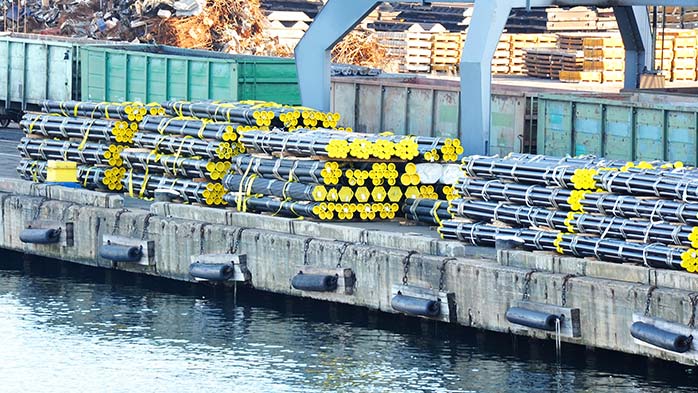
The agricultural sector has been caught between conflicting drivers – the essential nature of food production, the need to contain the spread of the pandemic, volatile foreign exchange rates and the impact of macroeconomic uncertainty on food and biofuels demand. This has ultimately trickled down to fertilizer production cost economics and demand drivers.
Fertilizer demand has proved resilient in the face of prior economic shocks, but the industry is not immune to a collapse in the financial system. There are numerous risks to be aware of in the face of increased uncertainty surrounding the Covid-19 pandemic. In addition to our regular analysis covering the latest market trends and implications for the future, we have been evaluating the impact of Covid-19 on the fertilizer markets. This insight summarises some of our recent analysis on the situation, and the unique ways in which fertilizers have been hit by the global pandemic.
In such a rapidly developing and uncertain situation, the CRU fertilizer team is constantly reviewing the impacts of Covid-19 on the fertilizer market.
Please note - All article screenshots are taken from CRU’s subscriber-only content of Fertilizer Week and selected Market Outlook services. For more information please get in touch via the button at the end of the Insight.
1. Fertilizers are sheltered from near-term economic turbulence, but not immune to recession risks
Most governments have now classified fertilizers as essential goods, allowing deliveries to farmers to continue despite extensive lockdowns throughout the world. There are several transmission mechanisms through which Covid-19 could impact fertilizer markets, and fertilizer demand specifically. People must eat regardless of whether the economy is in an up or down cycle, but the prospect of slower economic growth and the threat of a prolonged global recession can impact fertilizer demand in other ways.

We have also considered the impact of Covid-19 disruptions on producer financial performance in 2020 and what these companies should be watching out for in the year ahead. The economic backdrop for fertilizer producers is increasingly complex. The upside of an already weak fertilizer price environment is better affordability for farmers, which coupled with strong crop acreage expectations for 2020 puts demand fundamentals in a robust position for the year ahead across the nutrients.
But in the first quarter of 2020 alone, the world has already had to contend with a shock to the Chinese market in the form of its Covid-19-induced lockdown, the disease’s spread westwards and a pandemic classification, the oil price nosediving below $30/bbl, and a subsequent collapse in global financial markets and company share prices.

2. Crop prices are exposed to commodity cycles, adding delayed bearish sentiment to 2021 demand expectations
Fertilizer demand is forecast to be most heavily impacted by Covid-19 in the 2021 crop planting cycle, as outlined in our special feature on the exposure of fertilizer markets to recession risks. The pandemic is likely to have limited impact on the spring season in the Northern Hemisphere as farm margins and credit availability are at relatively healthy levels, with planting intentions mostly “locked-in” despite Covid-19 disruptions. However, beyond this spring season, Covid-19 and any resulting economic repercussions pose a threat to fertilizer markets through agricultural commodity price declines, currency devaluations and declining feedstock prices.

Despite the relative optimism over H1 2020 demand, there are still some pockets of concern in the near-term, such as potash sales into Southeast Asia and Brazil.


3. The energy market backdrop is as important as ever
Gas and coal feedstock costs form the majority of nitrogen production costs and also feed into raw material prices for phosphate fertilizer and NPK production. We continue to track and forecast the major gas and coal benchmarks in order to understand the outlook for cost competitiveness as part of our regular market analysis. But there are also indirect impacts from broader energy drivers such as the collapse in oil prices. We have outlined the core relationship between oil and commodities in recent insights, and the specific impacts of the oil price slide on fertilizer markets. These include the hit to oil-exposed exchange rates, the longer-term relationship between oil and freight rates, near-term price sentiment drivers, and the role of crops dedicated to biofuels and the associated fertilizer demand.

The energy market has already entered into a period of investor caution on the back of dramatically lower prices, which has slowed the pace of new project development. We have also considered the possible impact of the capital investment climate on nitrogen projects under construction.

4. India has been one of the hardest hit fertilizer markets due to Covid-19 lockdown
Most governments have classed fertilizers as essential goods, and this has helped to avoid major disruptions across the supply chain. However, a key exception to this has been in India, where the strict Covid-19 lockdown has led to logistics bottlenecks and ultimately, widespread plant closures and low utilisation rates. As one of the most crucial demand centres for nitrogen and phosphate fertilizers, a slowdown in domestic Indian production has implications for the global market, which we have considered in detail.

India also faces the risk of demand destruction as a result of Covid-19, which could cap previous expectations of a strong outlook for fertilizer demand in 2020.

In response to the severity of impact on the Indian fertilizer supply chain, CRU will be hosting a webinar on Wednesday 22nd April. The webinar will address how the country’s lockdown is affecting the Indian fertilizer and metals industry and features our Mumbai-based fertilizer analyst, Koyel Choudhury.
5. CRU Fertilizers: Covid-19 Watch
The fertilizer market is continually changing as governments, producers, retailers and end-users make adjustments in response to the pandemic. The CRU Fertilizer team has been tracking daily impacts of Covid-19 across all aspects of the fertilizer markets, ultimately quantifying the lost production due to Covid-19. From supply-chain disruptions through to farmer demand trends and the impact on industrial markets, our regular series of Covid-19 Watch insights are designed to brief our clients on the latest crucial developments in a rapidly evolving and highly uncertain situation.

We continue to monitor the impact of Covid-19 on the fertilizer markets closely – with further insights coming soon on a number of themes, including the impact of FX on industry cost curves and whether oil refining cuts will push sulphur from feast to famine.
All article screenshots are taken from CRU’s subscriber-only content of Fertilizer Week and selected Market Outlook services. For more information on our coverage or to gain access to the content shared within this CRU Insight contact us via the button below.
Explore this topic with CRUThe Latest from CRU

Decarbonisation will reshape global steel trade flow
CRU’s Steel Long Term Market Outlook presents comprehensive analysis of global steel trade flows until 2050. Decarbonisation will play a significant role in redefining...


